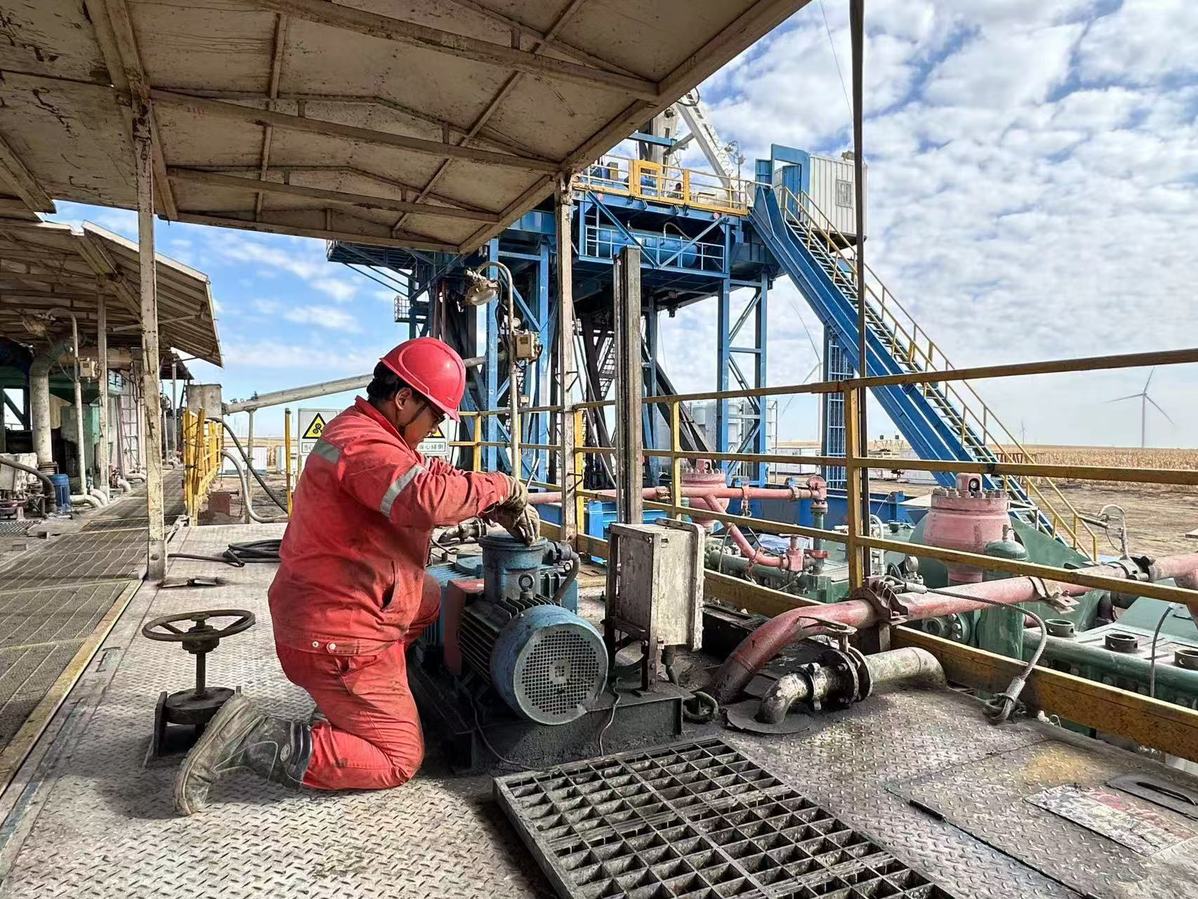SOE forges on with shale oil extraction
By ZHONG NAN | China Daily | Updated: 2024-10-22 09:54

The second drilling unit of CNPC Greatwall Drilling Co completed a drilling task in the Gulong shale oil formation in Daqing, Heilongjiang province, in late September, laying a solid foundation for the efficient extraction of shale oil from Daqing Oil Field.
The company — a unit of State-owned China National Petroleum Corp — completed the project in 20 days, achieving a section depth of 3,065 meters.
As an important energy source, the development and utilization of shale oil can significantly alleviate the pressure on China's energy consumption and reduce its dependence on foreign oil.
The new drilling technology and short drilling cycle will effectively lower extraction costs of shale oil from Daqing Oil Field, ensuring national energy security, said Du Lei, a project manager at the second drilling unit of Beijing-based GWDC.
The accomplishment will also stimulate growth in related sectors, such as petroleum equipment manufacturing and technical services, creating more jobs and economic growth points, said Du.
"The successful completion of this project highlights China's strength in global energy development," Du said.
The advances in the extraction of shale oil will ensure stable energy supplies for China, bolstering the country's economic growth, Du added.
China's energy self-sufficiency rate continued to rise in 2023, increasing to 85.6 percent, up 7.2 percentage points compared to 2016 levels, said Wu Mouyuan, vice-president of CNPC's Economics and Technology Research Institute in Beijing.
"The robust support of energy supply additions has contributed significantly to economic recovery," said Wu.
The implementation of economic stimulus policies and the rapid market recovery last year drove consumption demand for energy like petroleum and natural gas, Wu said.
China's imports of energy products such as crude oil, natural gas and coal amounted to 901 million metric tons in the first three quarters of 2024, an increase of 4.8 percent year-on-year, statistics from the General Administration of Customs show.
In recent years, China has been stepping up efforts in ultra-deep oil well drilling to ensure energy self-sufficiency. The country's first scientific exploration well with a depth of over 10,000 meters — in Northwest China's Xinjiang Uygur autonomous region — broke through the 10,000-meter mark in March, making it the second-deepest onshore well globally and the deepest in Asia, said its operator CNPC.
Located in the Taklimakan Desert in the Tarim Basin, the Shenditake 1 well, a milestone in deep-earth scientific research and ultra-deep oil and gas exploration, is expected to reach a designed depth of 11,100 meters upon completion, it said.
China's three major oil producers — CNPC, China Petroleum and Chemical Corp and China National Offshore Oil Corp — reported record production of oil and gas equivalent at 906 million barrels, 258 million barrels and 362 million barrels, respectively, during the first half, up 1.3 percent, 3 percent and 9.3 percent year-on-year, statistics from the State-owned Assets Supervision and Administration Commission of the State Council show.
The second drilling unit of the GWDC has been providing drilling engineering services for multiple oil and gas fields domestically and internationally for nearly five decades. It possesses various types of drilling rigs and supporting equipment.
With an annual drilling capacity of 1.7 million meters, its scope of services primarily includes drilling, pre-drilling engineering and well completion operations, capable of handling various types of drilling and well-servicing projects for oil, natural gas, coal-bed methane, geothermal and water resources up to 9,000 meters in depth.
Domestically, the company operates across 20 provinces, municipalities and autonomous regions, forming long-term, stable partnerships with oil fields such as Liaohe Oilfield in Liaoning province and Changqing oilfield in Shaanxi province. It has also built a market presence in 11 countries and regions.
























